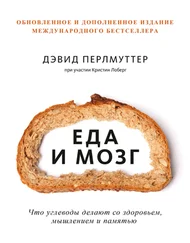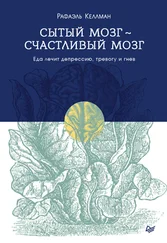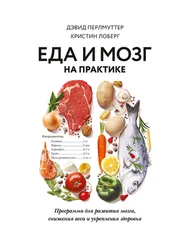Mobbs, D. et al. (2009), A key role for similarity in vicarious reward . Science 324:900.
Montgomery, G. H. (2003), Family and friends with disease: their impact on perceived risk. Prev. Med. 37:242–249.
Moroni, A. V. et al. (2009), Sourdough in gluten-free breadmaking: an ancient technology to solve a novel issue? Food Microbiol. 26:676–684.
Munk, M. D. (2010), ”Pine Mouth” Syndrome: Cacogeusia following ingestion of pine nuts (Genus: Pinus): An emerging problem? J. Med. Toxicol 6:158–159.
Naturskyddsföreningen (2010), http://www.naturskyddsforeningen.se/gronguide/ata/fiskolw(2009), pressrelease, ”fredagsmys”. olw (2010), hemsida, http://www.olw.se
Ouyang, X. et al. (2008), Fructose consumption as a risk factor for non-alcoholic fatty liver disease. J. Hepatol 48:993–999.
Pickering, C. et al. (2009), Withdrawal from free-choice highfat high-sugar diet induces craving only in obesity-prone animals . Psychopharmacology (Berl) 204:431–443.
Polivy, J. et al. (2008), Caloric restriction in the presence of attractive food cues: external cues, eating, and weight. Physiol. Behav. 94:729–733.
Poutanen, K. et al. (2009), Sourdough and cereal fermentation in a nutritional perspective. Food Microbiol. 26:693–699.
Power bar (2010), http://www.powerbar.com/prod-ucts/23/powerbar-triple-threatenergy-bar-chocolatetoffee-almond.aspx.
Richardson, A. J. (2006), Omega-3 fatty acids in adhd and related neurodevelopmental disorders . Int. Rev. Psychiatry 18:155–172.
Rolls, B. J. et al. (2007), Using a smaller plate did not reduce energy intake at meals . Appetite 49:652–660.
Rolls, E. T. (2004), Smell, taste, texture, and temperature multimodal representations in the brain, and their relevance to the control of appetite . Nutr. Rev. 62:S193-204; discussion S224-241.
Schwartz, J. & Byrd-Bredbenner, (2006), Portion distortion: typical portion sizes selected by young adults . J. Am. Diet Assoc. 106:1412–1418.
SciPow 9 (2007), Montreal: McGraw Hill. Simintzi, I. et al. (2007), The effect of aspartame metabolites on the suckling rat frontal cortex acetylcholinesterase: An in vitro study . Food Chem. Toxicol 45:2397–2401.
Taubert, D. et al. (2003), Chocolate and blood pressure in elderly individuals with isolated systolic hypertension . jama 290:1029–1030.
Vartanian, L. R. et al. (2008), Are we aware of the external factors that influence our food intake? Health Psychol. 27:533–538.
Wansink, B. (2006), Mindless eating – why we eat more than we think . New York:
Bantam-Dell. Wansink, B. & Chandon, P. (2006a), Can ”low fat” nutrition labels lead to obesity? J. Mark. Res. 43:605–617.
Wansink, B. & Chandon, P. (2006b), Meal size, not body size, explains errors in estimating the calorie content of meals. Ann. Intern. Med. 145:326–332.
Wansink, B. & Payne, C. R. (2008), Eating behavior and obesity at Chinese buffets. Obesity (Silver Spring) 16:1957–1960.
Wansink, B. & Payne, C. R. (2009), The joy of cooking too much: 70 years of calorie increases in classic recipes . Ann. Intern. Med. 150:291–292.
Wansink, B. & Sobal, J. (2007), Mindless eating: the 200 daily food decisions we overlook . Environ. Behav. 39:106–123.
Wansink, B. & van Ittersum, K. (2005), Shape of glass and amount of alcohol poured: comparative study of effect of practice and concentration . bmj 331:1512–1514.
Wansink, B. & van Ittersum, K. (2007), Portion size me: downsizing our consumption norms . J. Am. Diet Assoc. 107:1103–1106.
Wansink, B. et al. (1998), An anchoring and adjustment model of purchase quantity decisions . J. Mark. Res. 35:71–81.
Wansink, B. et al. (2005), Bottomless bowls: why visual cues of portion size may influence intake . Obes. Res. 13:93-100.
Wansink, B. et al. (2007), Internal and external cues of meal cessation: the French paradox redux? Obesity (Silver Spring) 15:2920–2924.
Weihrauch, M. R. & Diehl, V. (2004), Artificial sweeteners – do they bear a carcinogenic risk? Ann. Oncol. 15:1460–1465.
Wing, R. R. & Jeffery, R. W. (1999), Benefits of recruiting participants with friends and increasing social support for weight loss and maintenance . J. Consult Clin. Psychol. 67:132–138.
Wolever, T. M. et al. (1988), Second-meal effect: low-glycemicindex foods eaten at dinner improve subsequent breakfast glycemic response. Am. J. Clin. Nutr. 48:1041–1047.
Zhang, F. et al. (2008), Molecular mechanisms for the umami taste synergism. Proc. Natl. Acad. Sci. USA 52:20930-20934.
Приятного аппетита ( фр .) – Прим. пер.
Один из рецептов лукового масла: смешать растительное масло с репчатым луком, посолить поперчить, охладить. – Прим. пер.
Оссобукко (оssobucco) – телячьи ножки. – Прим. ред.
Умами – вкус, создаваемый глутаматом натрия и аминокислотам, был открыт сто лет назад японским ученым. – Прим. пер.
В российском прокате сериал выходил под названием «Безумцы». – Прим. ред.
Чабер – популярная приправа для блюд из овощей, мяса и рыбы, входит в рецептуру «болгарского кетчупа». В молдавской кухне носит название чимбру, в армянской – цитрон, в узбекской – джамбуль. – Прим. ред.
Антоцианы (от греческого anthos – цветок и кианос – темно-синий) – красящие вещества (пигменты) растений красного, синего и фиолетового цвета. – Прим. пер.
Кармазин (кармуазин, азорубин, Е122; англ . carmoisine; англ., нем., фр. : asorubine) – пищевая добавка, краситель, а также сам цвет этого красителя.
Ликопин – красящее вещество, в больших количествах присутствующее в плодах и овощах красного цвета. – Прим. ред.
Сульфорафан ( англ . sulforaphane) – органическое соединение растительного происхождения, обладающее противораковым и антибактериальным эффектом – Прим. пер.
Рецепт приготовления соуса винегрет: 1 ст. л. винного уксуса, 4–5 ст л. оливкового масла, ½ ч. л. соли, 1/8 л. черного перца. – Прим. ред.
Тахин и, тахина, или тхина (также известна как сезамовая паста) – распространенная на Среднем Востоке густая паста из молотого кунжутного семени. – Прим. пер.
Читать дальше
Конец ознакомительного отрывка
Купить книгу







![Ингвар Мартин - Волшебные Поля [СИ]](/books/396383/ingvar-martin-volshebnye-polya-si-thumb.webp)




